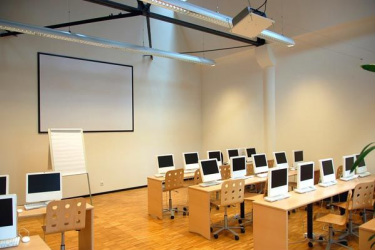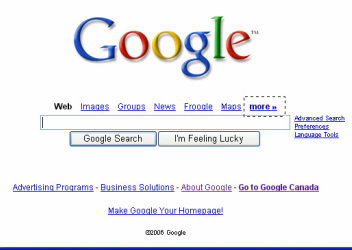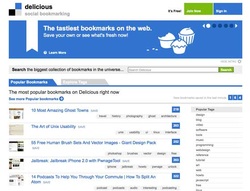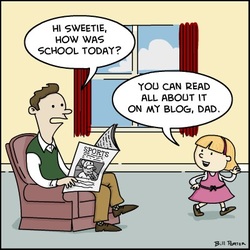
What are standards? Its quite simple really. Standards are a set of topics that every teacher is required to teach to their class. For example, as a 9th grade World History teacher, the State of Ohio requires that I teach my students about important Enlightenment thinkers, ideas, and its subsequent affect on later generations. However, little known are the technology standards that teachers are also required to teach. The International Society for Technology in Education, or ISTE, is the professional body that steers technology education in the US. By browsing the ISTE website, you can see many cool things, such as teacher and administrator standards. The website also includes several useful resources that teachers can use. To be even more specific, the Ohio Department of Education website includes the specific technology standards for teaching in the State of Ohio.
All of this information is very valuable to teachers. Previously, I had not known that I was required to teach technology standards in my classroom. As such, this new knowledge has made me more aware of what information I must know and teach to my students. Just like the content standards in their field, teachers should acquaint themselves with the technology standards in their state. It is important to remember that as teachers we are teaching our students the skills they need to succeed in life, not just the skills to pass our course.
Possibly even more important than the technology standards (which, lets be honest, most teachers probably don't actively teach) are the school technology rules. One of the most important technology rules is the school's Acceptable Use Policy, or AUP. The AUP is a document that states what children are allowed to access while using the school's internet connection. Oftentimes, both students and parents sign the AUP document stating that they understand and will abide by these rules. I am sure that most teachers will have a pretty thorough understanding of what activities are acceptable and which activities are not. However, it is still very important for teachers to familiarize themselves with the AUP in case a "gray area" arises. Children need to learn how to acceptably use technology, and as teachers we are the facilitators of that.
Lastly, and most important of all, are emerging technologies (well, emerging to anyone who has lived under a rock for the last 4 years...or North Korea). What is the point of having technology standards and netiquette if children do not keep up with the continually evolving world of technology? As of right now, several not so emerging technologies are used by millions of people everyday. Some of these technologies include social networking sites such as Twitter and Delicious. Other technologies include Podcast (a downloadable, non-streaming visual or audio episode) and Google Docs (Google's free equivalent to Microsoft Office).
These new technologies are very important in today's world. Student's must know how to use these technologies because they are what is "in." There is a sort of "technological arms race" in which everyone must constantly be up to date with new technologies. A student who does not stay up to date with these technological innovations cannot possibly expect to make themselves marketable in the job world. As such, it is important that we as teachers stay in tune with emerging technologies for several reasons. As stated, we need to know what technologies are important to teach students for the job market. It is also important to stay ahead of technology that can be used to exploit the educational system (such as free-translation, or some other website that allows students to cheat). Lastly, knowing about emerging technologies will allow our students to learn. As stated in a previous blog, I did my field experience at a school that gave every student an IPod with course related apps. Although not every school may have these means, it is important that teachers know about emerging technologies to help our students learn. Sites lite Twitter or Facebook can allow teachers and students to (appropriately) communicate during off hours. If the student has a question, then the teacher can easily be contacted for help. Furthermore, things such as Youtube videos and Podcasts can be used by teachers to supplement their material and further student understanding. Understanding the popular technologies can also allow teachers to build their lessons around student interests. For example, instead of a research paper, students can be assigned a "Wikipedia Project" where students critique the Wikipedia entry on a given topic. Ultimately, what matters is student learning. There is no reason that teachers and students should not be aware of the many resources they have available at their fingertips to help facilitate that learning.
Technology is consistently changing. As such, so are the rules and standards. As teachers, it is vital that we can stay on top of emerging technologies and better reach our students.
All of this information is very valuable to teachers. Previously, I had not known that I was required to teach technology standards in my classroom. As such, this new knowledge has made me more aware of what information I must know and teach to my students. Just like the content standards in their field, teachers should acquaint themselves with the technology standards in their state. It is important to remember that as teachers we are teaching our students the skills they need to succeed in life, not just the skills to pass our course.
Possibly even more important than the technology standards (which, lets be honest, most teachers probably don't actively teach) are the school technology rules. One of the most important technology rules is the school's Acceptable Use Policy, or AUP. The AUP is a document that states what children are allowed to access while using the school's internet connection. Oftentimes, both students and parents sign the AUP document stating that they understand and will abide by these rules. I am sure that most teachers will have a pretty thorough understanding of what activities are acceptable and which activities are not. However, it is still very important for teachers to familiarize themselves with the AUP in case a "gray area" arises. Children need to learn how to acceptably use technology, and as teachers we are the facilitators of that.
Lastly, and most important of all, are emerging technologies (well, emerging to anyone who has lived under a rock for the last 4 years...or North Korea). What is the point of having technology standards and netiquette if children do not keep up with the continually evolving world of technology? As of right now, several not so emerging technologies are used by millions of people everyday. Some of these technologies include social networking sites such as Twitter and Delicious. Other technologies include Podcast (a downloadable, non-streaming visual or audio episode) and Google Docs (Google's free equivalent to Microsoft Office).
These new technologies are very important in today's world. Student's must know how to use these technologies because they are what is "in." There is a sort of "technological arms race" in which everyone must constantly be up to date with new technologies. A student who does not stay up to date with these technological innovations cannot possibly expect to make themselves marketable in the job world. As such, it is important that we as teachers stay in tune with emerging technologies for several reasons. As stated, we need to know what technologies are important to teach students for the job market. It is also important to stay ahead of technology that can be used to exploit the educational system (such as free-translation, or some other website that allows students to cheat). Lastly, knowing about emerging technologies will allow our students to learn. As stated in a previous blog, I did my field experience at a school that gave every student an IPod with course related apps. Although not every school may have these means, it is important that teachers know about emerging technologies to help our students learn. Sites lite Twitter or Facebook can allow teachers and students to (appropriately) communicate during off hours. If the student has a question, then the teacher can easily be contacted for help. Furthermore, things such as Youtube videos and Podcasts can be used by teachers to supplement their material and further student understanding. Understanding the popular technologies can also allow teachers to build their lessons around student interests. For example, instead of a research paper, students can be assigned a "Wikipedia Project" where students critique the Wikipedia entry on a given topic. Ultimately, what matters is student learning. There is no reason that teachers and students should not be aware of the many resources they have available at their fingertips to help facilitate that learning.
Technology is consistently changing. As such, so are the rules and standards. As teachers, it is vital that we can stay on top of emerging technologies and better reach our students.
On the other hand, maybe new technologies aren't such a good thing.


